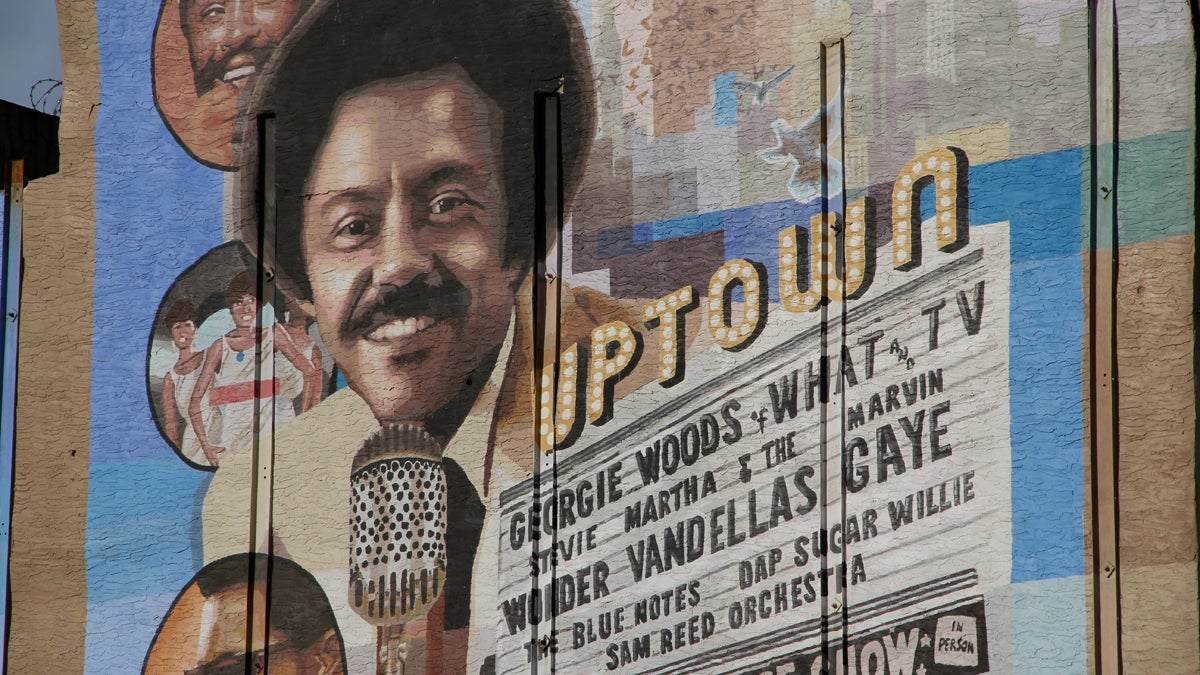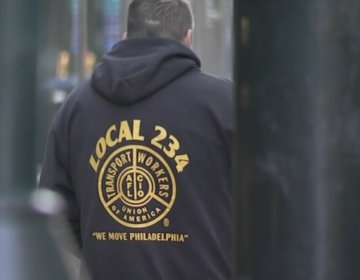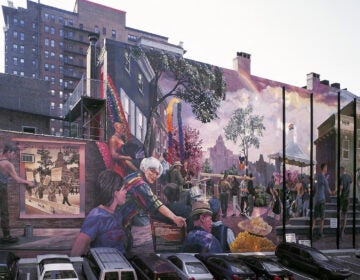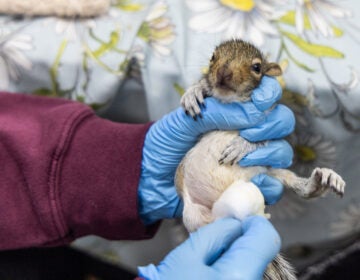Harmony on the street and on the stage of the Uptown
Listen
Uptown Theater 2240 N. Broad Street. (Emma Lee/for NewsWorks)
This was a neighborhood crawling with talent.
“It was not uncommon to have boys and men walk around ‘crooning,’ as they would say,” said Ruth Birchette, who grew up at 19th and Norris streets in North Philadelphia in the 1950s and ’60s. “Many times I would run to my window to hear. It was so angelic.”
Birchette was living in the sweet spot of the Philadelphia sound. Just up the street was the rehearsal space of the Dreamlovers (who backed up Chubby Checker on “The Twist” and had their own hit with “When We Get Married”); in the neighborhood lived members of the Stylistics (“You Make Me Feel Brand New”); and a short walk away was the Uptown Theater.
“If you can imagine these three-story, brick rowhouses, the voices of harmony just bellowing up into the sky,” said Birchette. “I literally thought as a kid that all the neighborhood men could sing. I really, really, really did.”
She could hardly be blamed for believing everybody could harmonize. There were record distributors lining both sides of Broad Street, and music sounding from windows.
“In the summer, I would open my window and play,” said Bobby Eli, who got his first electric guitar at age 14 at 32nd and Diamond streets. “All of a sudden people were ringing my bell, asking who played guitar.
“One day this guy who had a group called the Ivy Tones rang my bell. He said he needed a guitar player to do a gig. I said, ‘What’s a gig?'”
Eli eventually got a gig to back up the Vibrations as they toured the world in the ’70s. He is now a producer at his Grooveyard studio in Upper Darby.
The hallowed hall that was the Uptown
A mecca of R&B, the Uptown was the last rung before bands went to the Apollo Theater in New York. Every major star of African-American popular music came, including James Brown, the Supremes, the Marvelettes, Smokey Robinson — also comics Redd Foxx, Flip Wilson, and Moms Mabley, and jazz greats like Sarah Vaughan and Miles Davis.
“It was a big milestone to have a chance to go to the Uptown, when your parents trusted you to go to the Uptown. Because there were older boys there, you know. You only got to go to the matinee,” said Birchette, whose father first let her go when she was 12 years old.
“I learned recently that my sister went on her first date at the Uptown. I didn’t know that,” she said. “Neither did my dad.”
The success of the Uptown was due, in part, to its main mouthpiece, DJ Georgie Woods. Woods spun records at WDAS and WHAT, and became a calming voice during the 1964 race riots, later an activist for civil rights — all while announcing weather reports, delivering news reports, and playing crisp hits by the Temptations, Marvin Gaye, and the Supremes.
Woods booked bands at the Uptown, sometimes emceeing the shows himself. His taste was trusted.
“When I first went inside the Uptown, it was a hallowed hall,” said Eli, who often hid inside the auditorium so he could sneak into the second show. “I didn’t want to pay extra to see the next show, so I would hide behind something.”
Acts would come in for several days, sometimes more than a week, playing as many shows as the clock would allow: 50-cent weekday matinee shows for teenagers after school, an evening show (or two), and a midnight show. More shows were added on weekends.
“You didn’t have time to go home,” said Sam Reed, who led the 12-piece house band from 1963 to 1971. “Sometimes on Saturdays we did five or six shows, plus the midnight show. Sundays, we would do five shows.”
The stars were down to earth
There was little down time, and little room for divas. The stars integrated themselves into the neighborhood.
“They really liked the tavern across the street from my house,” said Birchette, who remembers musicians going to Ida’s restaurant on 19th and Columbia (now Cecil B. Moore), and the Blue Angel Bar at Woodstock and Norris streets, where her brother once shared the bar top with the Temptations.
Most fans knew they could meet the stars on Carlisle Street, where the stage door opened behind the Uptown.
“There was a lady across the street, Miss Pearl,” remembered Reed. “She was a fine cook. Everybody loved her food.”
Miss Pearl did not own a restaurant, nor a permit to serve food. But she did, anyway.
“She would offer dinners and had a speakeasy thing going on,” recalled Eli. “Dinner and drinks and hanging out. Those who liked gambling could go upstairs — craps and cards. Quite an interesting experience. She could cook some chitlins, man.”
Miss Pearl is gone now, along with the golden age of the Uptown.
In 1971, Reed left for Los Angeles to pursue jazz. The neighborhood was getting rougher, and Georgie Woods stopped booking shows at the Uptown.
It closed in 1978, to be briefly revived in the 1980s as Nu-Tech. Then it was just shuttered and left to rot.
“The Uptown was purchased in 2001,” said Linda Richardson, president of the Uptown Theater Entertainment and Development Corporation. “We have been active since 1995 in developing a strategy for revitalization in the Broad Street and Susquehanna communities.”
Anticipating a revival
The UEDC has been nursing a $10 million fundraising campaign to bring back the dilapidated theater. In December, the corporation expects to complete a $3.5 million reconstruction of office spaces adjacent to the auditorium. The grand 2,100-seat auditorium is waiting for more millions to be raised.
Richardson wants to see the stage lit up again with multicultural performers.
“In the early stages of the Uptown, the neighborhood was multicultured. It was white, ethnic, and African-American,” said Richardson. “Toward the ’70s and ’80s, it was predominately African-American. Then with [Temple] University came a broader population.
“While the demographics are changing from the time the Uptown was closed, it’s very much the way the Uptown was in the ’50s and ’60s,” she said.
As for Sam Reed, the former Uptown band leader, he came back home, settled in South Philadelphia, and for decades has been a indelible presence of the jazz community, recently retired from teaching at the Clef Club. He can’t shake his R&B days at the Uptown.
“When I worked at Spider Kelly’s, that was a jazz house. I worked at Showboat, which was a jazz house. Peps was a jazz house. They don’t remember that,” he said. “They just remember the Uptown.”
WHYY is your source for fact-based, in-depth journalism and information. As a nonprofit organization, we rely on financial support from readers like you. Please give today.





